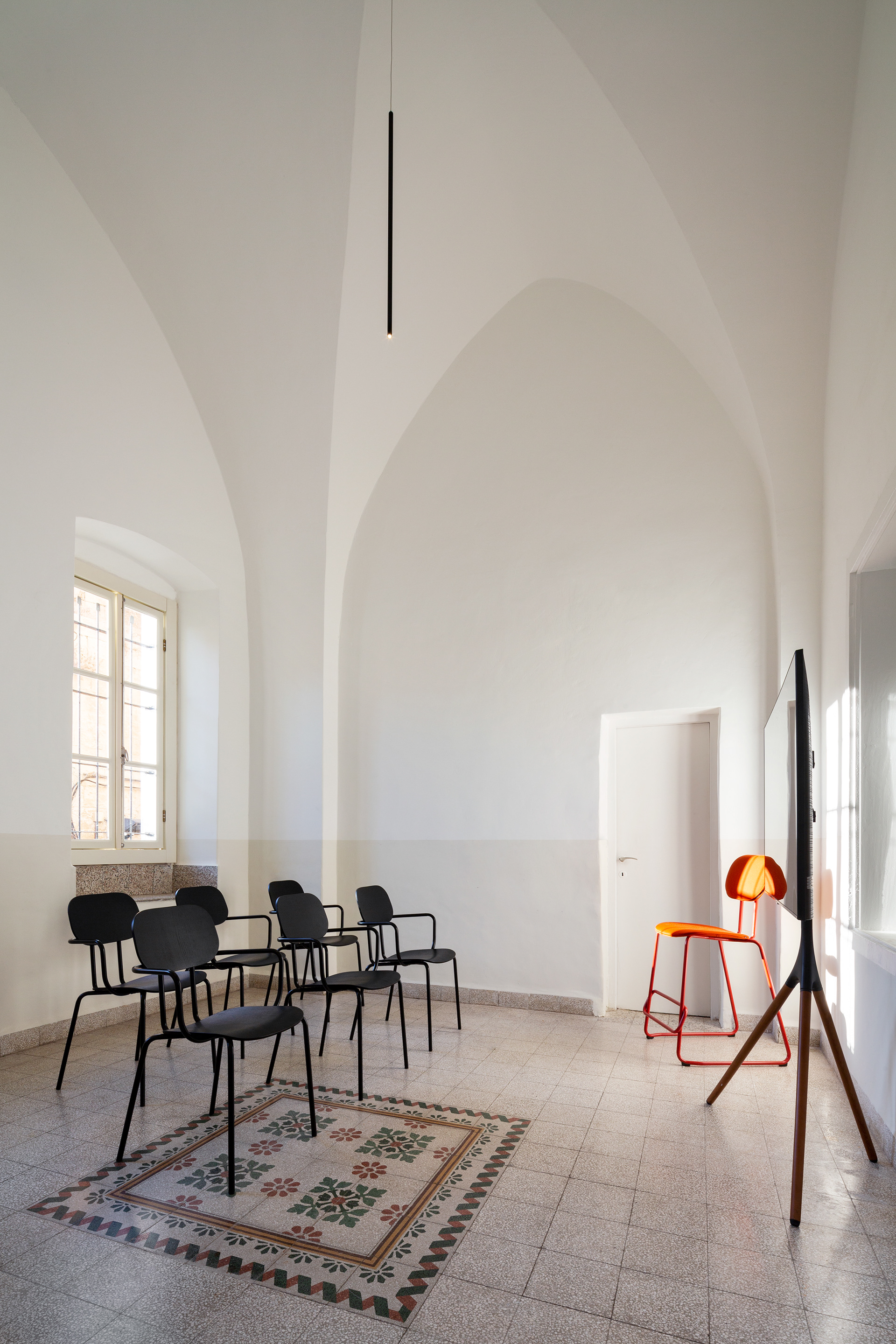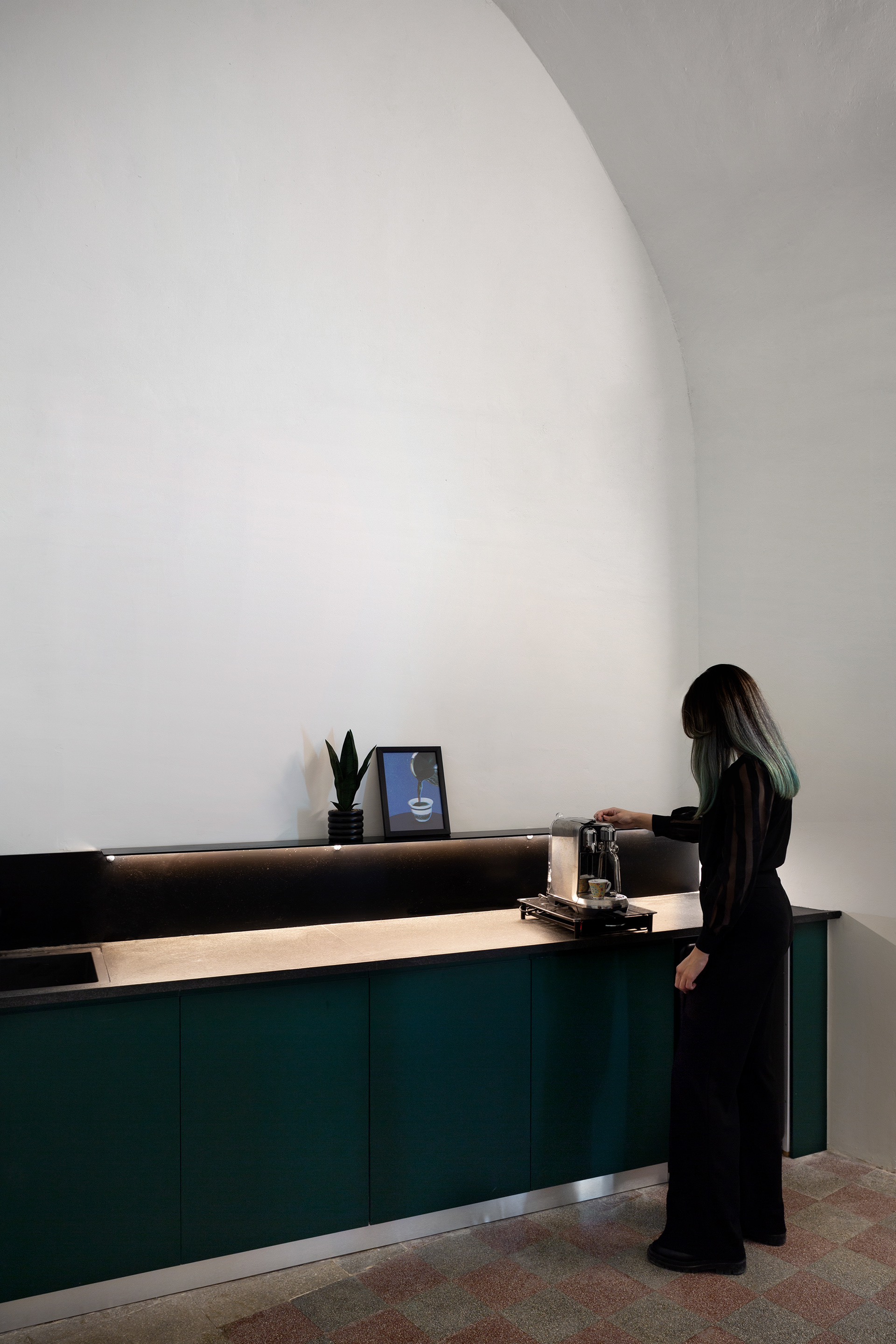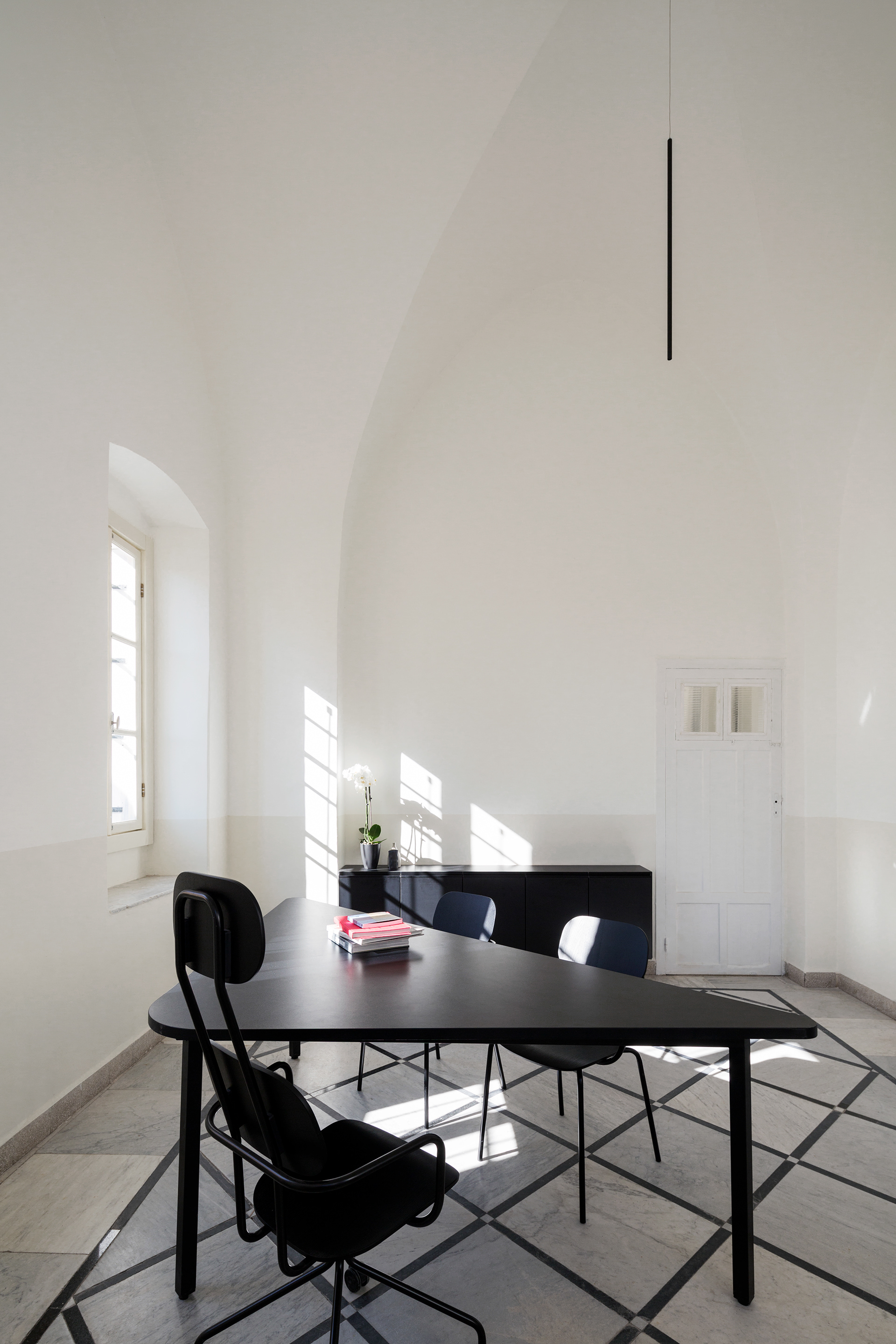Tectura studio
Project: Preparatory school of Architecture.
Co-founders and managers: Lubna assaf, Ranad deeb.
Team: Lour Fahoum, Adan Farhat, Doreen abu nassar, Ghayad khatib, Alaa najim,
Ameer shalash, Hamoody jamal, Shaymaa krayem, Siwar badarny.
Year:2019.
Location: St 6112-20, Nazareth.
Co-founders and managers: Lubna assaf, Ranad deeb.
Team: Lour Fahoum, Adan Farhat, Doreen abu nassar, Ghayad khatib, Alaa najim,
Ameer shalash, Hamoody jamal, Shaymaa krayem, Siwar badarny.
Year:2019.
Location: St 6112-20, Nazareth.
Tectura is an architectural, cultural and academic enterprise. The idea derived from an urgent intellectual and ideological necessity to support and embrace young architectural talents.
As a first step we have chosen to work with prospect students of architecture, as we prepare them for university life and entry exams of architecture. In fact we received an enormous amount of help that enabled us to establish our project in a short time relatively.
The idea is an extension of an architectural promise that we believe in as architects and we’re researching it in our capstones.
Our capstones argues the relationship between the building and society and its role in connecting spaces with identity. This is what we continuously apply in our day-to-day life.
As part of this application, we chose to be part of an urban renewal in the old town of Nazareth that is distinguished by its rich history, intellectual and social status.
We worked for two years in the old town’s club as a temporary space, throughout our work we encountered our current space, Tectura – the first architecture institution of its kind across the country.
The space of the institution was previously a residential space to the Farah family, they abandoned it for 30 years, originally the space was established as dormitory for the Russian compound school students and it is known that the renowned author Mikhail Naimy used to live in one of rooms during his studies.
The space is considered one of the handful homes with the Arabic heritage-based impression of the beginnings of the 20th century it was:
The vault, is a technology that marked out special methods of construction.
The materials, namely the stone is an essential component for construction.
Functionality: the main space of this kind of homes used to be a public indoor space that connects the multiple private spaces together.
We found a strong similarity between our vision as architects and the functionality of this pattern of construction. As well as we have the chance to create an entity that aims to preserve the heritage and it relies on it as an anchor for the future. The space needed total renovation that is based on preserving the architectural identity, commemorating and highlighting the pattern of the edifice.
we focused on Underlining the vault through reviving its shape, Renewing the pattern of construction and qualifying the space to be an academic space,underlining the vault through abstracting it from details.
And through creating clean walls and ceilings in order to mark out the vault’s lines and its power in shaping the dimensions and defying the relations inside the space, renewing the pattern of construction.
The second act of renovation was qualifying the many functions of the space that we need in the institution through relying on the original pattern of construction, we took the Liwan (the courtyard in Arab houses) as a main space that creates a meeting and a connection point between all of the institution’s functions and all its users such as students and staff
Connecting the edifice through its new function as a reaction to the systemic negligence of heritage and the abandonment of such spaces with architectural and historical value
we decided to take an exceptional architectural act that is distinguished in preserving the front facade of the main entrance through adding new element as an architectural statement about the significance of preserving heritage and creating a new link connection between the past and present.
As a first step we have chosen to work with prospect students of architecture, as we prepare them for university life and entry exams of architecture. In fact we received an enormous amount of help that enabled us to establish our project in a short time relatively.
The idea is an extension of an architectural promise that we believe in as architects and we’re researching it in our capstones.
Our capstones argues the relationship between the building and society and its role in connecting spaces with identity. This is what we continuously apply in our day-to-day life.
As part of this application, we chose to be part of an urban renewal in the old town of Nazareth that is distinguished by its rich history, intellectual and social status.
We worked for two years in the old town’s club as a temporary space, throughout our work we encountered our current space, Tectura – the first architecture institution of its kind across the country.
The space of the institution was previously a residential space to the Farah family, they abandoned it for 30 years, originally the space was established as dormitory for the Russian compound school students and it is known that the renowned author Mikhail Naimy used to live in one of rooms during his studies.
The space is considered one of the handful homes with the Arabic heritage-based impression of the beginnings of the 20th century it was:
The vault, is a technology that marked out special methods of construction.
The materials, namely the stone is an essential component for construction.
Functionality: the main space of this kind of homes used to be a public indoor space that connects the multiple private spaces together.
We found a strong similarity between our vision as architects and the functionality of this pattern of construction. As well as we have the chance to create an entity that aims to preserve the heritage and it relies on it as an anchor for the future. The space needed total renovation that is based on preserving the architectural identity, commemorating and highlighting the pattern of the edifice.
we focused on Underlining the vault through reviving its shape, Renewing the pattern of construction and qualifying the space to be an academic space,underlining the vault through abstracting it from details.
And through creating clean walls and ceilings in order to mark out the vault’s lines and its power in shaping the dimensions and defying the relations inside the space, renewing the pattern of construction.
The second act of renovation was qualifying the many functions of the space that we need in the institution through relying on the original pattern of construction, we took the Liwan (the courtyard in Arab houses) as a main space that creates a meeting and a connection point between all of the institution’s functions and all its users such as students and staff
Connecting the edifice through its new function as a reaction to the systemic negligence of heritage and the abandonment of such spaces with architectural and historical value
we decided to take an exceptional architectural act that is distinguished in preserving the front facade of the main entrance through adding new element as an architectural statement about the significance of preserving heritage and creating a new link connection between the past and present.
Liwan - the main space of the institute.
photographer: Mikaela brustow
The Gallery
photographer: Mikaela brustow
The Gallery
photographer: Mikaela brustow
Model: Adan Farhat
Floor Plan
The Facade
photographer: Mikaela brustow
Model: Adan Farhat



